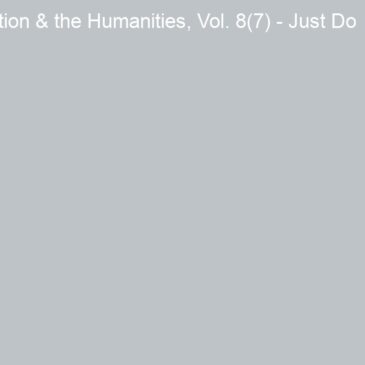This week, we continue a series focusing on addiction and advertising. In this series, we explore the relationship between advertisements, drug use, and public perceptions of addiction.
In the last Addiction & the Humanities, we analyzed messages about drug use in pharmaceutical advertisements. Just like pharmaceutical companies, major commercial brands sometimes use popular notions about drugs to sell their products. This week’s Addiction & the Humanities examines a recent advertising campaign in which Nike used expressions of drug addiction to sell shoes.
Nike hired Saatchi & Saatchi, an international marketing firm, to run the advertising campaign in Brazil. The first stage of the campaign featured stickers in restrooms of popular bars and nightclubs in São Paulo and Rio de Janeiro. On the stickers was written #coisadaboa (meaning “the good stuff” in Portuguese) and a telephone number, simulating a drug user-drug dealer interaction. Newspaper block ads announced the arrival of the "good stuff". The second part of the campaign featured this commercial that aired online, on TV, and in movie theaters:
The ad mixes drug-sniffing dogs, police raids, withdrawal sweats, shoe tossing—all classic images associated with drugs and drug addiction. Through pairing these images with the narration of a person who is supposedly “addicted” to running, Nike portrays running as an addiction. Unfortunately, it misses the mark, instead spreading harmful and stigmatizing messages along the way.
“Welcome to the world of addiction—the only addiction that is good for your body,” the narrator says. By insisting that running is “the only addiction that is good for your body,” the commercial is completely dispensing with the potential for harmful exercise addiction. Clinicians and researchers are beginning to recognize exercise addiction and explore what it means for people. For those who have behavioral addictions like exercise addiction, and who might not be getting the proper nutrition to sustain vigorous exercise habits, this kind of exercise is an unhealthy behavior that carries serious medical risks. In these cases, a running addiction is not “good for your body.”
“It’s a physical and chemical addiction. Your body changes and your mind transforms.” Despite scientific evidence for increased release of endorphins during exercise—frequently dubbed “runner’s high”—there is a lack of conclusive evidence that it follows the same trajectory of physical dependence that some substances do (Freimuth, 2011).
“You start slowly, thinking ‘I can stop whenever I want.’ It’s a one-way ticket to ever longer distances….I have never met an ex-addict.” Just because a person starts running does not mean that he or she will develop an addictive relationship with running. Although the mood-altering effects of exercise are available to everyone, not all people who exercise often and intensely become addicted to exercise. People can indeed develop psychological addiction to exercise, but like most addictive behaviors, it is changeable through intervention and treatment (Freimuth, 2011). Branding a runner as “once an addict, always an addict” perpetuates a longstanding stigmatizing and unhelpful conceptualization of addiction.
In the previous Addiction & the Humanities we learned that advertisements sometimes pathologize everyday problems to sell a product, using a “normal as drug (worthy)” paradigm. Lately, some advertisements have taken the converse route and normalized the pathological, using a “drug as normal” paradigm. Nike treats pathology—addiction—as normal or healthy and manages to grossly exploit a public health issue to sell sneakers. The company is trying to make money by presenting the idea that addiction can be healthy, and that there can be a “good” kind of addiction—conveniently, only the kind that it is selling. Moreover, it is trying to make the case that many people are (or could be) addicted to running, and you should be too. The scene towards the end of the commercial with thousands of “addicted” runners wearing Nike shoes is disturbing, rather than solidarity-inspiring.
Media outlets frequently sensationalize addiction, and it works because people are curious. But just because an advertising technique is effective at eliciting an emotional response does not mean that using it is justified or ethical. Addiction and drug abuse are not worthy of being advertised even indirectly, especially when the facts are twisted. Overall, the advertisement provides no compelling reason to buy the story—or the shoes.
– Kat Belkin
What do you think? Please use the comment link below to provide feedback on this article.
References
Ads of the World. (2011). Nike: Addiction Retrieved Aug. 12, 2012, from http://adsoftheworld.com/media/tv/nike_addiction
Freimuth, M., Moniz, S., & Kim, S.R. (2011). Clarifying exercise addiction: Differential diagnosis, co-occurring disorders, and phases of addiction. . International Journal of Environmental Research and Public Health, 8(10), 4069–4081.




